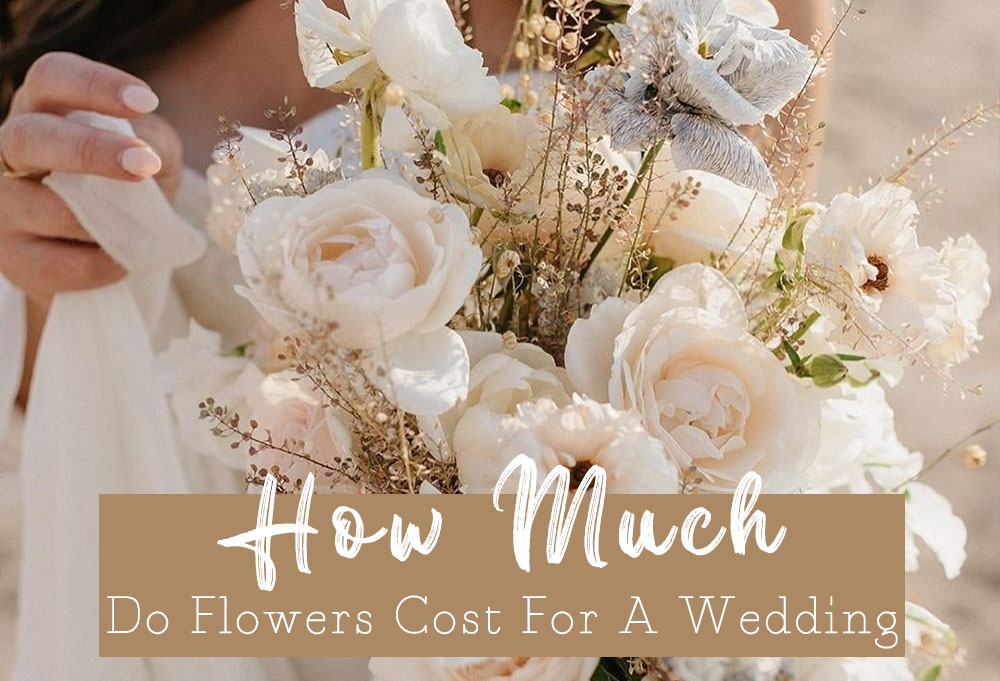
If you’re planning a wedding, chances are that flowers are going to be part of the equation. After all, there’s no other flower ceremony that’s more universally recognized as “wedding.” But what do you really know about wedding flowers? How much do they cost? How many do you need? And how can you save money on them while still making them look amazing in photos and on your big day? We’re here to help with that last question. In this guide we’ll discuss everything from average cost of bridal bouquets to tips for saving money when shopping around for wedding florists so that you can feel more confident about selecting the perfect flowers for your big day!

The Average Cost of Flowers for Wedding
What are the most expensive flowers? The most expensive flowers for weddings are calla lilies, peonies phalaenopsis orchids, gardenias, and hydrangeas. The cheapest flowers for a wedding are lilies, daisies and carnations.
What is the average cost of wedding flowers? The average cost of wedding flower arrangements ranges from $700 to $2500 depending on your budget and location (national average is $1500).
Average Cost Of Wedding Flowers
| Floral Item | Average Cost | Average Range |
|---|---|---|
| Florist | $1,500 | $500-$3,500 |
| Bridal bouquets | $160 | $60-$965 |
| Bridesmaids bouquet | $75 | $45-$155 |
| Pin-on corsage | $25 | $22-$48 |
| Wrist corsage | $30 | $28-$65 |
| Boutonniere | $20 | $10-$25 |
| Groom’s boutonniere | $25 | $15-$35 |
| Bundle of rose petals | $20-$25 | |
| Altar flowers | $500-$1,550 | |
| Reception dinner tables | $500-$800 | |
| Reception head table | $550-$1,500 |
How do I save money on my wedding flowers? You can save money by using fewer large flower centerpieces at each table instead of many small ones or by choosing less expensive options like succulents or moss balls instead of fresh cut greenery for your bouquets and boutonnieres/corsages.
Average Cost of a Bridal Bouquet
The average cost of a bridal bouquet is between $100 and $300 ( the average cost of a bridal bouquet is $160). The exact amount you’ll pay will depend on the type of flowers you choose, as well as their quality, size and number of stems. For example, an arrangement with 10 roses that are grown in-house will cost less than one made up of only five stems that were imported from other countries.
- In general, there’s no set rule when it comes to how much brides should budget for flower arrangements on their wedding day—but most experts recommend keeping the amount under 20% of your total budget (so if your dress costs $5k, keep flowers at around $1k). While this may seem like a lot at first glance—don’t forget about all those other non-floral decor details!
The tone of your wedding will also affect the style of your bouquet. For example, if you have a formal wedding, you’ll likely want a more traditional bouquet. Examples of conventional bouquets include the:
- Nosegay—A compact collection of petite flowers.
- Domed bouquet—The design most people think of when they picture a bouquet.
For casual weddings, a bride may choose a modern design, such as a:
- Cascade bouquet—Flowers flow over the bride’s wrist and hang toward the ground.
- Shaped bouquet—The flowers create a specific form like an “S” or “7.”
- Fan bouquet—The flowers are arched in a broad fan shape.
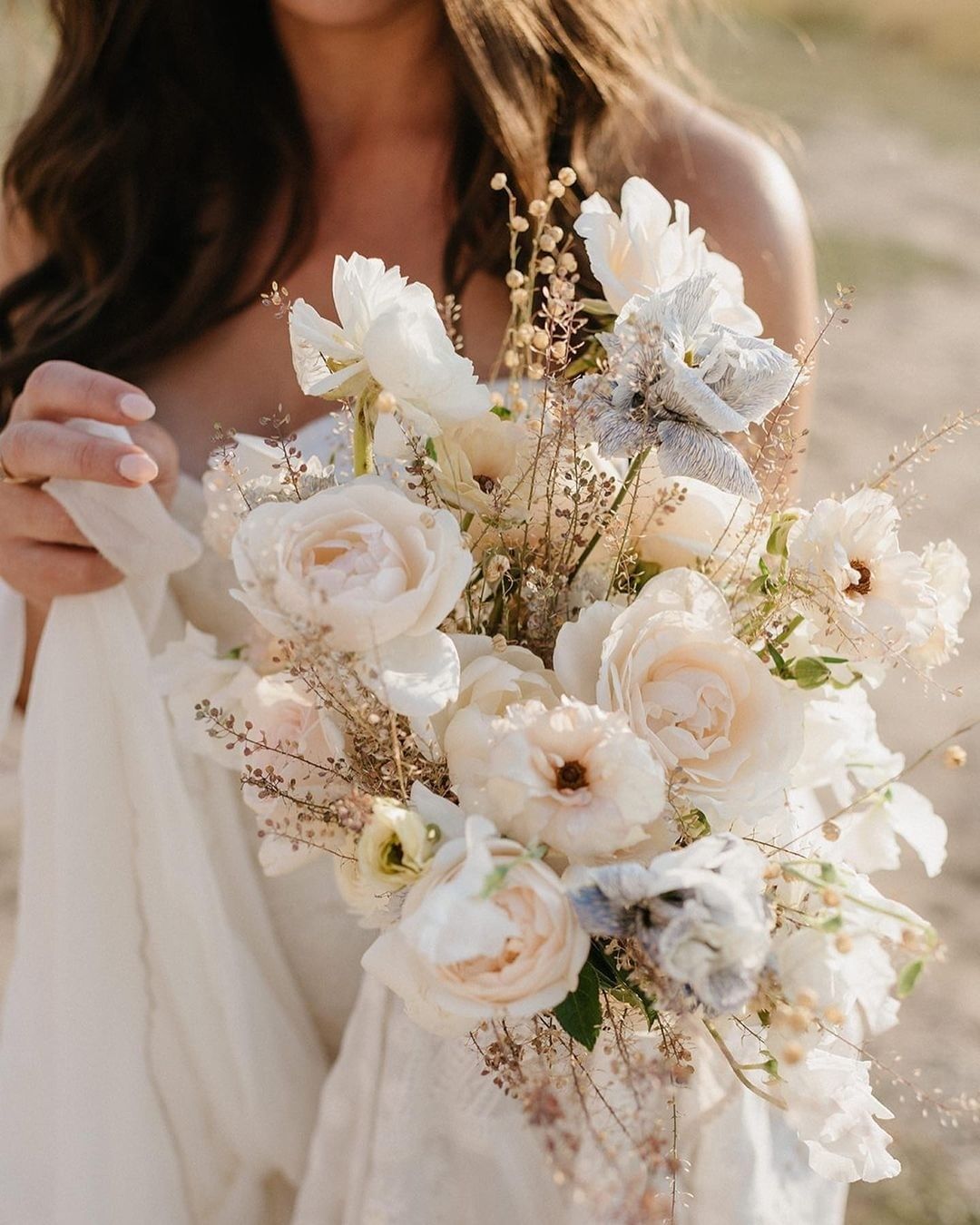
Cost of Bridesmaid Bouquets
The average cost of bridesmaids bouquets is $75
Bridesmaid bouquets are another essential wedding flower item. You will want to choose the right floral bouquet for your bridesmaids and make sure that they are going to look great in their photos at the wedding.
If you’re looking for a cheap option, consider using silk flowers instead of real ones. Silk flower arrangements can look just as beautiful as their organic counterparts, but they are much less expensive because they don’t require water or maintenance after the event is over! You may also want to use fake flowers if you would prefer not having any kind of greenery around you on your special day. If this is true for you, then I recommend ordering some fake roses from Amazon or Etsy —they come in many colors and styles so there’s something out there for every bride!
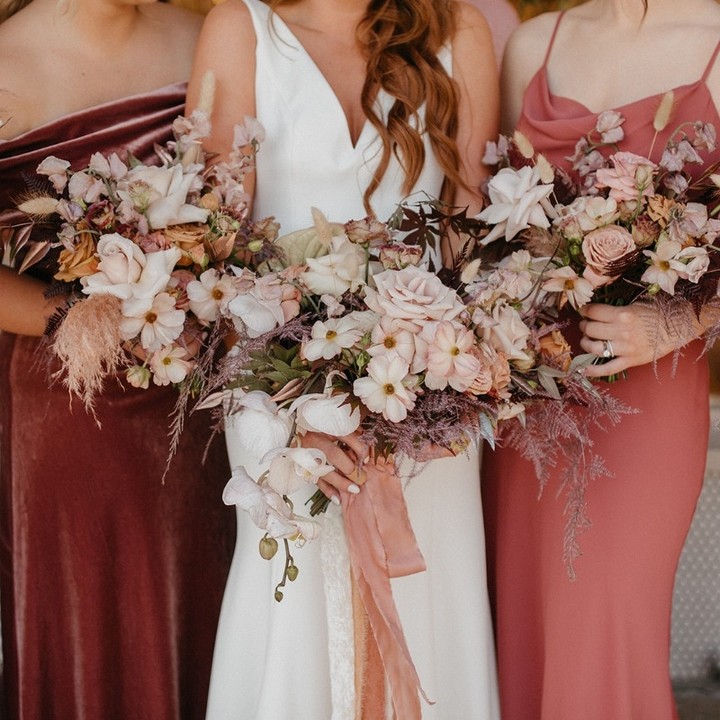
Cost of Boutonnieres
The average cost of a boutonniere is $20.
Boutonnieres are usually made from the same flowers as the bridesmaid bouquets, so you won’t need to worry about adding cost here. However, if your boutonniere is going to be different than the bridesmaids’ flowers (e.g., if it’s summertime and you’re having an outdoor wedding), then you’ll need to factor that into your budget.
A boutonniere is generally a single flower or small cluster of flowers placed on a pin or wire, which is attached to the lapel of a tuxedo jacket or other formalwear outfit. Most florists will also provide a matching corsage for each woman attending in your wedding party.
Like corsages, there are no hard and fast rules as to who receives a boutonniere. However, traditionally, boutonnieres are presented to:
- Groom.
- Groomsmen and bridesmen.
- Father of the Bride.
- Father of the Groom.
- Stepfathers.
- Grandfathers
- Male attendants, such as a ring bearer, ceremony readers, ushers, etc.
- Male officiant.
- Any man the bride or groom would like to give special recognition.
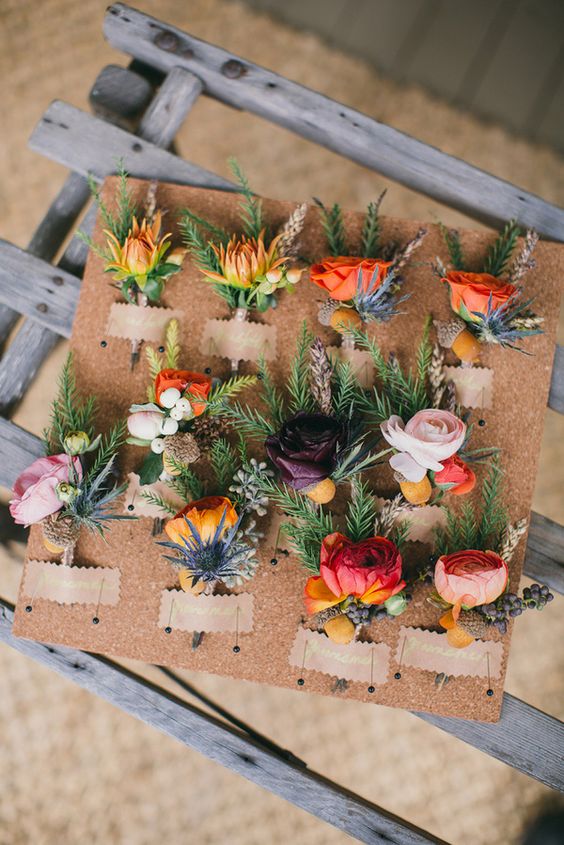
Cost of Corsages
At a wedding ceremony, flower accessories honor and acknowledge people special to the bride and groom. Corsages are petite floral arrangements that are pinned to a woman’s clothing or worn on their wrist. Corsages usually complement the shape, color, and flowers of the bridal bouquet. The average cost for a pin-on corsage is $25, while the average price for a wrist corsage is slightly more at $30.
Corsages are generally presented to female family members or close friends. While there are no hard and fast rules as to who gets a corsage, traditionally, corsages are given to:
- Mother of the bride.
- Mother of the groom.
- Stepmothers.
- Grandmothers.
- Groomswomen.
- Female attendants, such as a ring bearer, flowers girls, ceremony readers, ushers, etc.
- Female officiant.
- Any woman the bride or groom would like to give special recognition.
Cost of Floral Centerpieces
- Average cost: $120-$600
- How to save money: If you’re looking for cheap flower centerpieces, think outside the box. Instead of flowers, use other décor items that can be found in your own home or at thrift stores and dollar stores. For example, you could use candles instead of flowers for a romantic look!
- How to find cheap flowers: Sometimes finding inexpensive wedding décor is easier than it seems at first glance. There are plenty of places online where you can buy inexpensive bouquets and bundles at rock-bottom prices. The key is knowing where to look—and not spending too much time trying to figure out how much each item costs (which will just drive you crazy). Instead, focus on finding what works best with your theme and budget before making any buying decisions so that when it comes time to pay up front there won’t be any surprises waiting in store—or on credit card statement later down road when all those bills come due sooner rather than later.”
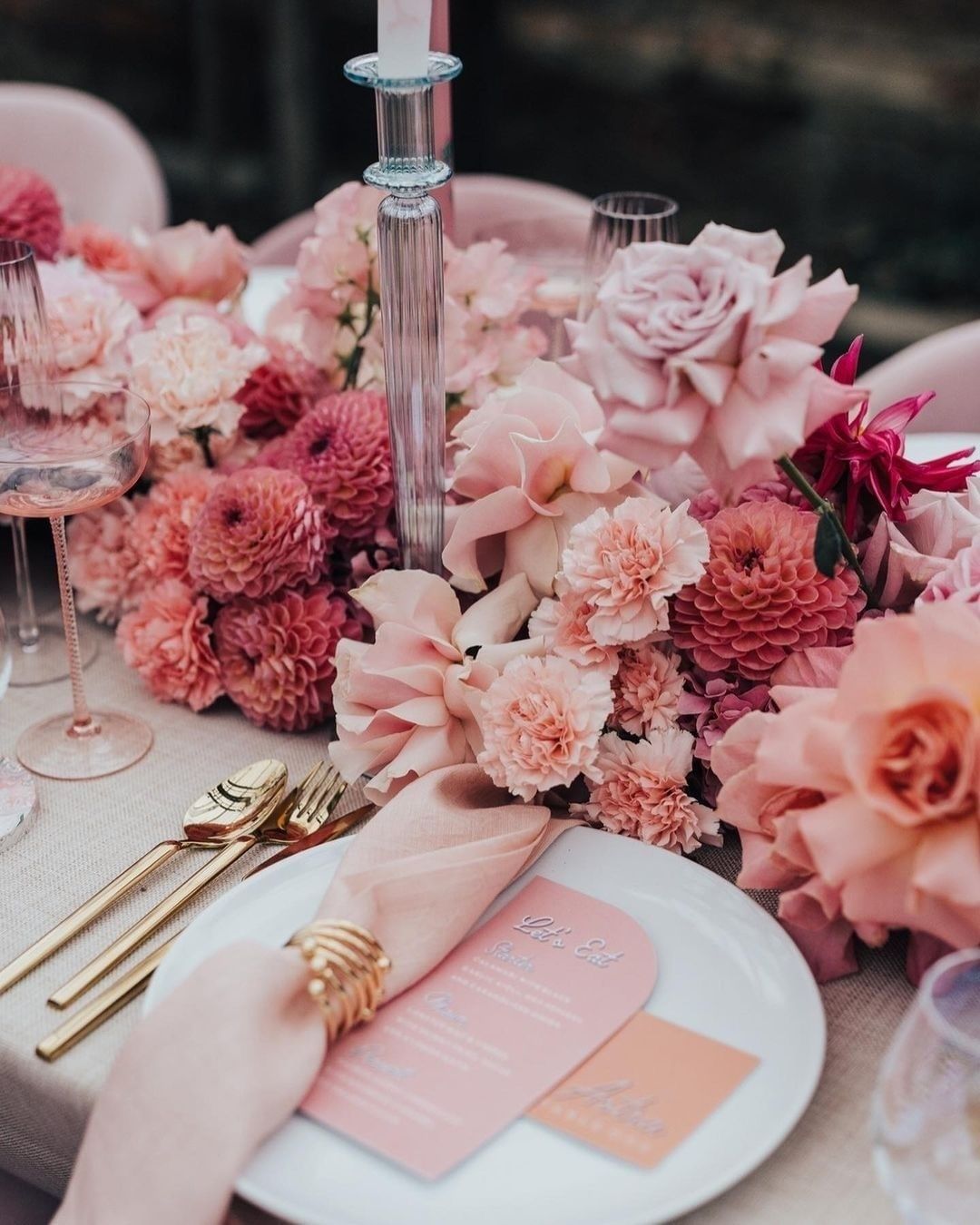
Average Cost of a Wedding Florist
The florist is included in the $1,500 average cost of wedding flowers. Is a florist worth it? Well, a florist’s services extend far beyond just delivering flowers on the day of the wedding.
Consultation—This is a meeting to help the florist understand your vision for the wedding and your wedding venue, such as its theme, style, and color palette, in addition to the types of flowers you like and dislike. The florist will also discuss the average flower costs for wedding ceremonies. After this meeting, the florist will deliver one or a few proposals, including the flower types, arrangements, and the total price.
Purchasing—Once you have decided on your flowers, the florist has to create a purchase order for them. This is how the florist ensures that your blooms arrive at the perfect moment, not too soon or too late.
Flower managing and storage—Your florist will receive the flowers for your wedding a day or two before your big day. During this time, the florist will remove all thorns and unsightly stems and leaves and store the flowers to guarantee their freshness.
Construction—Creating beautiful wedding arrangements is a labor-intensive process. Every bouquet needs to be bundled, every boutonniere bound, and every centerpiece artfully arranged.
Delivery and set up—In the hours before your wedding, while you’re nervously getting ready, the florist’s crew is busy delivering and setting up the flowers at your ceremony and reception sites.
Cleanup—After the big day, you and your partner will jet off into your new life together, but someone needs to gather those leftover blooms. Your florist will assist in gathering the arrangements and all specialized containers used to hold them.
Another way to reduce the cost of your wedding florist is by making simple bouquets yourself. As long as they meet all the requirements—they have good color combinations, they smell nice (but aren’t overpowering), they’re durable enough to last through dinner service—you should be fine! Just keep in mind that this option only works if you already have experience with floral arrangements; otherwise, hiring a professional will probably be better for everyone involved.
Save Money On Wedding Flowers
- Choose flowers that are in season. Although you may think your favorite tulips or roses look beautiful, they might not be the best choice for your wedding. Flowers that aren’t in season don’t have as many blooms; therefore, they are more expensive and less abundant.
- Use locally grown flowers instead of imported ones. You can avoid paying extra shipping costs by getting your flowers from a local florist or farmer’s market if possible. If this isn’t an option for you, consider buying cut flowers from a wholesale distributor who will deliver them to your venue on the day of your wedding so they’re fresher than what could be shipped from overseas—and at a lower cost!
- Opt for plants instead of fresh-cut blooms if possible (e.g., ivy trailing down walls). Plants last longer than cut flowers because they aren’t cut off at their stems every day like cut flower arrangements do when placed in vases filled with water (which is necessary for them not to wilt). And since no one wants wilted greenery hanging around during an event like yours where everything should look perfect all the time…if only we could afford it!
1. Mix Expensive Flowers With Inexpensive Flowers
Mixing expensive flowers with inexpensive ones is a good way to save money on the total cost of your wedding flowers. For example, if you want to use peonies at your wedding, but they’re too expensive for your budget, consider buying them in a cheaper color instead (such as pink). Or if you love roses but don’t want to spend so much money on them, use red and white carnations in place of roses.
Using less-expensive flowers that are still pretty can help you save money while giving off an overall sense of elegance and beauty at your wedding.
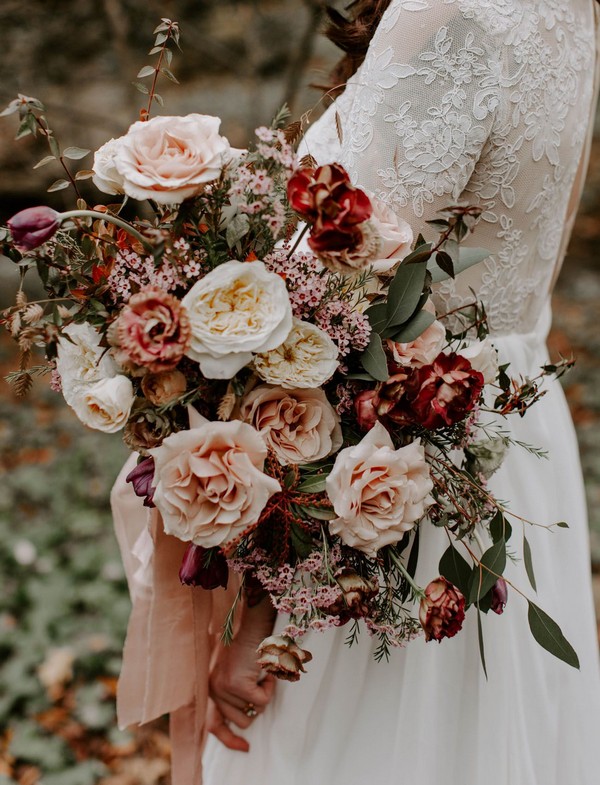
2. Use Lighting and Other Décor
- Use lighting to highlight flowers. Flowers have a tendency to look lovely on their own, but many times flower arrangements are placed in dark or dimly lit spaces. This can make them look less than appealing, especially if you’re planning on taking pictures with your wedding party and guests. To bring out the best in your floral arrangements, try using candles or other types of lighting that will complement them. You could also use mirrors around the room to reflect light back onto your flower arrangements and give them a brighter appearance.
- Use other décor to complement floral arrangements. While we’ve already talked about lighting being one way to improve the appearance of your flowers, there are other ways you can use décor with similar effects: mirrors are a great example here since they tend to reflect light back onto whatever they’re surrounding (such as your floral arrangements), making them seem brighter than they actually are! Another thing I would recommend is using decorative elements like pillars or candelabras (instead of tablecloths) because these will help draw attention towards where most people will be spending their time at any given moment during an event such as an engagement party/wedding reception/etcetera
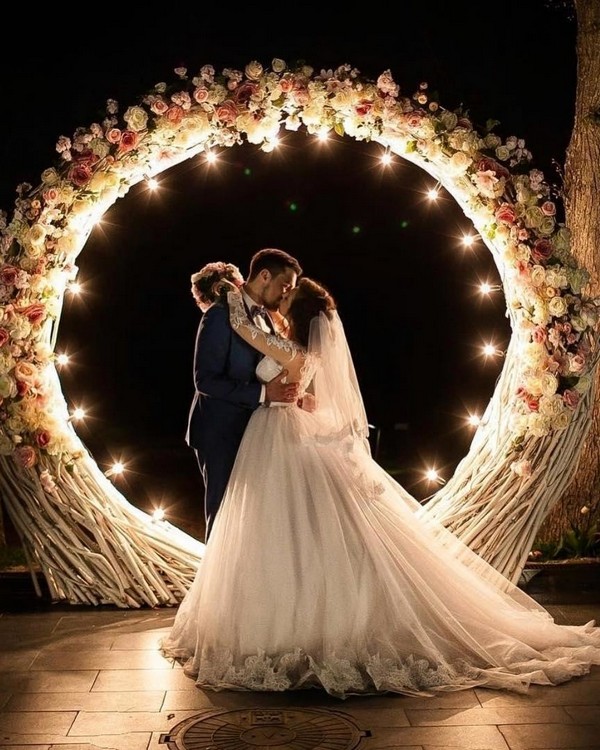
3. Reuse Flowers At The Reception
-
Use the ceremony flowers as centerpieces.
There’s no need to head out and buy new centerpieces, especially if you already have a budget in mind. Instead, use what was already purchased for your ceremony—vases and all—to decorate the reception tables. The same goes for aisle decor: If you’ve already got vases at home (or are renting them), go ahead and use those instead of buying new ones!
-
Use ceremony flowers as table decorations.
Did those gorgeous peonies look good atop your bridesmaids’ heads? Why not put them on display? You can also try using arrangements of greenery and flower petals as table decorations; these are especially easy to make yourself by tying together clippings from your garden or picking up some loose bunches from a local florist shop (which will be much less expensive than purchasing something pre-made). Using existing arrangements is one way that couples can keep costs down without sacrificing style or creativity!
4. Buy Flowers in Season and Local
Another way you can save money on flowers for your wedding is to choose flowers that are in season, grown locally and grown in your state. For example, if you’re getting married in June or July, don’t order flowers from another country — they’ll likely be more expensive because of the transportation costs. Instead, go with local blooms that are similar to what’s available at home (such as lavender and hydrangea) or choose fresh cut flowers from a florist near your venue instead.
If you’re like me and have never been good at keeping plants alive past a week or so after bringing them home from the garden store, consider ordering all your wedding centerpieces online! There are tons of great companies out there who will ship live plants directly to your door step if you just give them some advance notice about when exactly you need them by.
5. Opt for Volume
If you want your flowers to look full and lush, go for volume.
“Full-petal flowers will go much further in terms of space than smaller blooms,” says wedding planner Francesca DiSalvo-Follmer, owner of Pure Luxe Bride. Erica Taylor Haskins, co-founder of Tinsel Experiential Design, loves using towering flowering branches like cherry blossom and forsythia as a way to get a colorful, voluminous look.
“We’ve seen people use the tall trees like cherry blossoms or magnolias as centerpieces,” she adds. “Or if they have a really large room and they want something more dramatic than small arrangements on each table, we’ll bring in big vases that hold bigger bunches.”
6. Only A Few Types of Flowers
- You don’t have to use every flower in the book. The more variety of flowers, the more expensive your floral arrangements will be. Instead, stick with a few varieties that you love and work within their price range so that you can stay within your budget.
- When deciding on what type of flowers to use for your wedding bouquet, think about what season it is at the time of year when you’ll be getting married. For example, if you’re planning on getting married in June and want peonies for your bouquet as well as other arrangements throughout the venue, consider switching them out for roses in May or June when they’ll be available at discounted prices due to their availability being limited until mid-summer (when they’re no longer in season).
| Flowers (per stem) | Wholesale | Retail |
|---|---|---|
| Carnation, assorted colors | $0.50 | $1.75 |
| Tulip, standard | $0.65 | $2.25 |
| Calla lily, standard | $0.70 | $2.45 |
| Rose, red | $0.95 | $3.35 |
| Rose, non-red | $1.00 | $3.50 |
| Lily, Asiatic, long | $1.50 | $5.25 |
| Rose spray | $1.50 | $5.25 |
| Tulip, parrot type | $1.60 | $5.60 |
| Hydrangea, long | $5.50 | $19.25 |
| Orchid, dendrobium | $15.00 | $52.50 |
| Orchid, cymbidium | $20.00 | $70.00 |
| Orchid, phalaenopsis | $28.00 | $98.00 |
7. Opt For Plants Instead Of Fresh-cut Blooms
When it comes to flowers, you might be surprised at how much they cost. Even if you’re going for a simple bouquet, chances are good that you’ll spend hundreds of dollars on flowers alone. So why not consider using plants instead? Plants can be just as beautiful and dramatic as traditional floral arrangements and can even be more affordable if you purchase them from reputable suppliers like Costco.
Even better: Potted plants are generally cheaper than cut flowers because they don’t have to be transported from farm to shop—so once you’ve picked out your perfect potted plant for your centerpiece or table decorations, all it takes is some care before the big day!
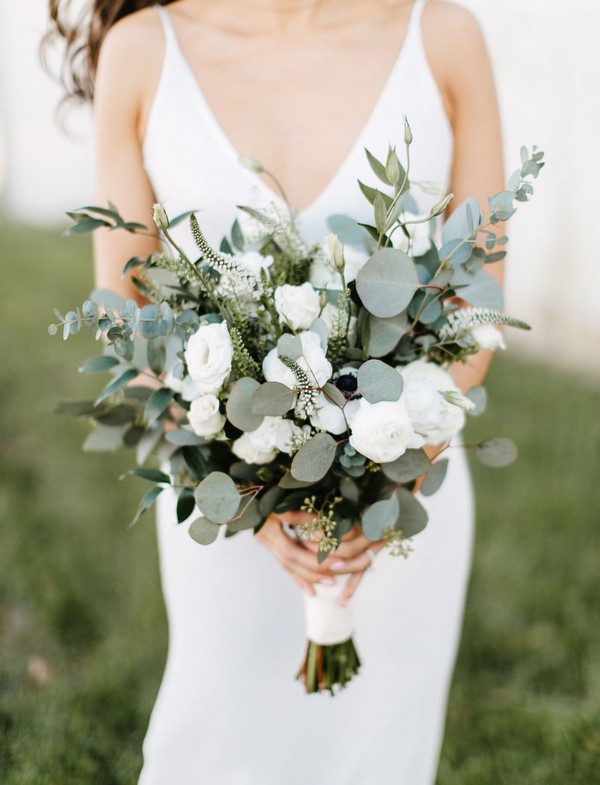
8. Ask Your Florist For Advice
Florists are experts in their field, so don’t be afraid to ask them for advice when planning your floral arrangements. For example, if you’re looking for a specific color of flowers and you can’t seem to find it anywhere, ask your florist where they would suggest getting them from. They will likely have already thought about this and have connections that could help you get the right type of flowers at a reasonable price point.
Another great way to save money is by asking your florist how you might be able to reuse some of the materials used in one arrangement for another arrangement—for example, using leftover greenery from one table centerpiece as filler for another centerpiece on another table.
9. Choose a Venue That’s Naturally Beautiful
Book a venue that’s naturally beautiful. Choose a windswept beach, a gorgeous garden, or a wooded grove as your wedding backdrop, and then just enhance your surroundings with simple floral accents. If you’re having an outdoor ceremony and reception, think about what kind of flowers would look good in each space. For example, if you’re going to have an evening party under the stars on the beach, use candles on all of your tables instead of flowers so that you don’t have to worry about them wilting away in their vases during the evening hours (remember: no one wants to sit at a table next to wilted petals).
If there are any elements at your venue where flowers can be incorporated into decorating—like hanging vines from trees or bushes on which they can grow—consider planting them there! For example: instead of floating bouquets down the aisle at my wedding reception (which was held outside), I decided to keep my bridesmaids’ bouquets empty until they got near where I wanted them placed; then we could attach them directly onto those branches!
10. Choose One or Two “Wow” Moments
The biggest mistake that couples make when creating floral arrangements is trying to cover every surface with flowers. It’s not necessary to have flowers everywhere at your wedding—you only need one or two “wow” moments. For example, a hanging garden or flower wall can do wonders in a space where there aren’t many things to look at.
In addition, avoid having multiple pieces of the same thing on each table; this makes it look like you’re trying too hard and creates an overstimulating effect for guests who have difficulty focusing on just one thing at a time (like me). Instead, try using fewer but more dramatic centerpieces such as large vases or unique pedestals that stand out against their surroundings—this will keep the attention focused where you want it while also providing some artistic flair!
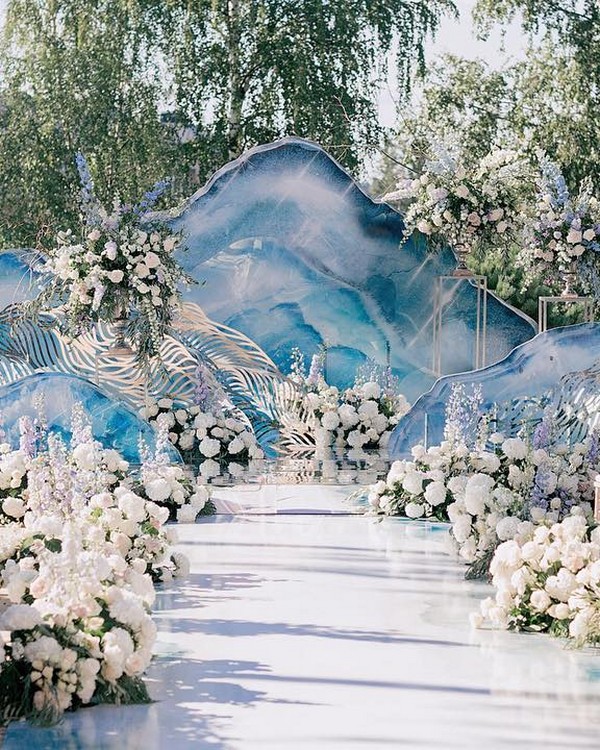
11. Mix Fake With Real
You can get artificial flowers for about half or less the cost of real flowers. However, faux blooms don’t provide the lovely aroma of authentic flowers. By mixing a few real flowers with the fake ones, you get full arrangements and floral fragrances at a discount.
12. DIY
A wedding florist is handy, but hiring someone is always more expensive than doing it yourself. For example, even if you want your bridesmaids holding a single rose, by the time a florist puts it all together, that rose will cost you $15 to $20. You can save a bundle by doing the little tasks yourself.
Conclusion
If you’re looking for ways to save money on flowers, there are many options available. You can choose less expensive flowers, reuse bouquets from other events and even find ways to incorporate plants into your wedding décor instead of traditional floral arrangements. If you’re still concerned about how much it will cost for your wedding florist bill, ask your florist about their rates before booking them so that you’ll know exactly what to expect when the big day arrives!
FAQS
What factors affect the cost of wedding flowers?
The cost of wedding flowers can be affected by factors such as the type of flowers, the size of the wedding party, the season, the location, and the level of customization. For example, rare or exotic flowers can be more expensive, and larger wedding parties will require more flowers
How can couples save money on wedding flowers?
Couples can save money on wedding flowers by choosing seasonal flowers that are readily available and less expensive, opting for simpler floral arrangements, and working with a florist to find cost-effective options. DIY floral arrangements can also be a more affordable option for couples who are willing to put in the effort.
When should couples start working with a florist for their wedding?
Couples should start working with a florist for their wedding as early as possible, ideally six to eight months before the wedding date. This will allow time for consultations, planning, and ordering of the flowers.
Comments are closed.